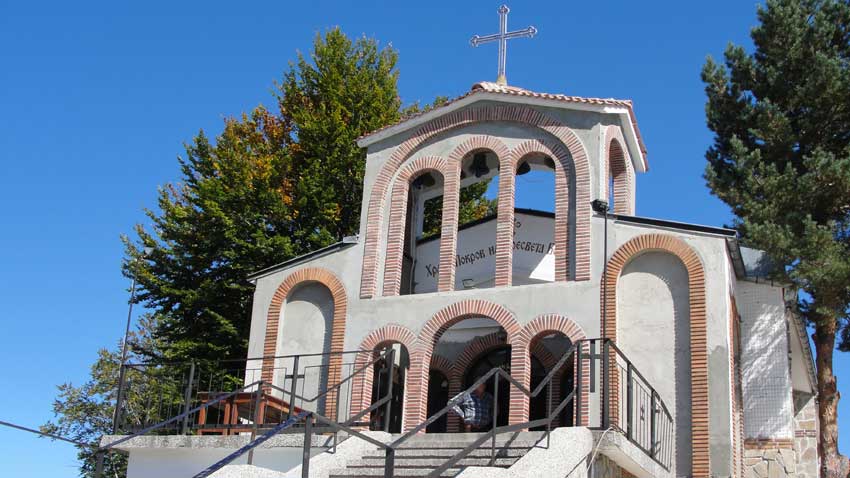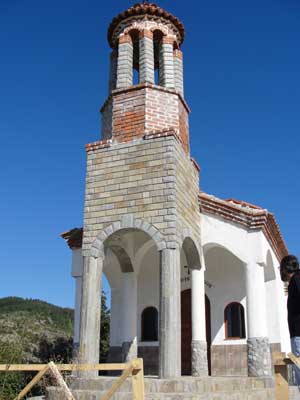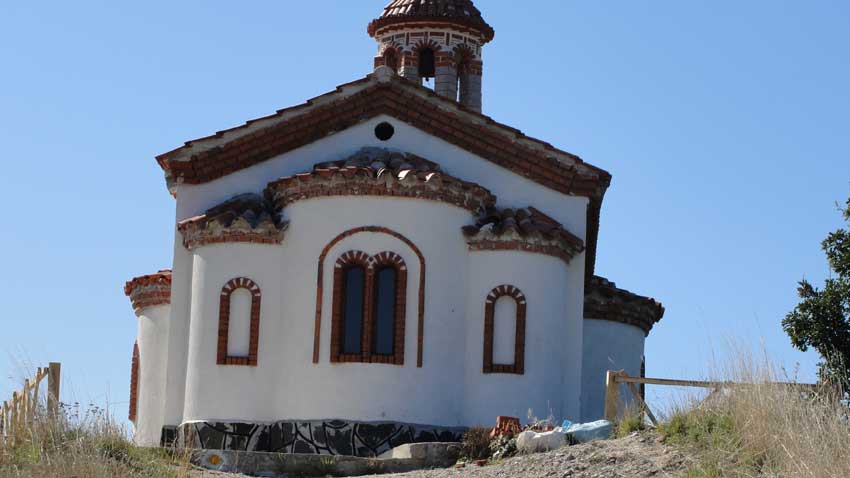September 14 is the right day to revisit the symbolism of the Holy Cross as Christians celebrated one of their main feasts. Its official name is Exaltation of the Precious and Life-Creating Cross but its widespread name is Holy Cross Day.
 The Holy Cross, called the sign of signs is an ancient symbol found in many cultures of the world. It is usually associated with the sun and fire or is interpreted as an equivalent of the tree of life. Most probably, with this amalgam of mythological meanings it is also present in traditional Bulgarian woodcarving where it is one of the main motifs. With the emergence of Christianity the Cross became its universal symbol because of the Crucifixion of Christ who defeated sin and death. Besides, the first letter in the name of God’s Son in both Greek and Cyrillic alphabets is shaped like a bending cross.
The Holy Cross, called the sign of signs is an ancient symbol found in many cultures of the world. It is usually associated with the sun and fire or is interpreted as an equivalent of the tree of life. Most probably, with this amalgam of mythological meanings it is also present in traditional Bulgarian woodcarving where it is one of the main motifs. With the emergence of Christianity the Cross became its universal symbol because of the Crucifixion of Christ who defeated sin and death. Besides, the first letter in the name of God’s Son in both Greek and Cyrillic alphabets is shaped like a bending cross.
The cross features prominently in architecture, in the interior decoration of churches and in all Christian rituals. In the ritual of christening, the child is given a medallion shaped like a cross, the token of accession to Christianity. In the past, in some regions of the country, crosses used to be tattooed on the foreheads of girls to prevent their abduction by Muslims.
For Christians, the sign of the cross is of great importance. According to theologians it is the shortest symbol of faith, speechless and accessible for all. By tradition, church-goers make the sign of the cross when they enter the church, before sitting at the table, drinking wine, making a trip or getting to work. It is believed that the sign of the cross banishes all kinds of demons and evil forces.
 The cross is worn as an amulet for protection against black magic, misfortunes and ill luck and is widely used in traditional healing practices. The effects of evil eyes are eliminated by giving the patient water in which a cross is dipped. A cross medallion brought from the Holy Sepulcher tied with a red thread is worn on the neck against scare. To protect women from miscarriage, a naked blacksmith should make a cross from silver coins collected from seven houses. The pregnant woman had to wear the medallion until the birth of her baby.
The cross is worn as an amulet for protection against black magic, misfortunes and ill luck and is widely used in traditional healing practices. The effects of evil eyes are eliminated by giving the patient water in which a cross is dipped. A cross medallion brought from the Holy Sepulcher tied with a red thread is worn on the neck against scare. To protect women from miscarriage, a naked blacksmith should make a cross from silver coins collected from seven houses. The pregnant woman had to wear the medallion until the birth of her baby.
In the Christian calendar the Holy Cross is honored four times a year, but the most important feast of the cross is on 14 September. It is associated with the coming of autumn. In popular mythology it is the day when the day and night crisscross, reach equal duration, and the sun starts its trip to the winter. This day gives the start to grape picking, walnut-trees’ thrashing, autumn plowing and sowing. Fasting is mandatory on this day as a way to pay homage to the Holy Cross. The priest tours homes and stack-yards and sprinkles holy water about. Leek pie, grapes, roast pumpkin and special loaves of bread decorated with a cross are served on 14 September. Those with names derived from Cross (Krastyo, Krastana, Krastina and Stavri) celebrate their name day.
In recent years, the Feast of the Cross has been associated with one of the most popular pilgrimage destinations in Bulgaria, Krastova Gora (Cross Mount) in the central Rhodope Mountains. It is believed that at this point the mountain is cross-shaped and somewhere inside is kept a particle of the Holy Cross. Excavations in the area suggest that an ancient monastery stood there and was reduced to rubble during the invasion of the Turks. In the 1930s a pious man and clairvoyant Brother Yordancho came to this place. He vowed that the place was wonder-working because it keeps a particle of the Holy Cross on which Jesus Christ was crucified. According to one of his stories the particle from the cross was given to the Turkish sultan and brought victory to his troops and empire. However the Russian tsar learned about the holy particle and sent envoys who took it away from the sultan by way of a conspiracy. When the sultan’s mother who was a Christian told him what he had lost, and he immediately sent troops after the Russians. They however changed their route and came to the monastery at Cross Mount where they left the relic. Soon after that the monastery was looted by the Turks and the monks killed. They however managed to hide the cross particle in a secret place, thus far unknown to the faithful.

This legend is passed down by word of mouth to the present day and has been attracting large groups of pilgrims to Krastova Gora. During communism access to the place was denied and pilgrims traveled secretly to the holy place. Most of them choose to visit the locality on the Feast of the Cross. There are many stories about prayers that have worked and about miraculous events and healings.
In the past, the Feast of the Cross was the ideal time for engagements and weddings. Wedding parties toured the village carrying flasks with sparkling wine... Merrymaking and preparation was on for one of the most important events in the patriarchal community.
English: Daniela Konstantinova
Ass. Prof. Iskra Baeva, PhD is an expert with the Institute of Folklore Studies cum an Ethnographic Museum at the Bulgarian Academy of Sciences
In the Bulgarian folk tradition, the feasts of Lazarus Saturday and Palm Sunday are related holidays. From Lazarus Saturday (Lazarovden in Bulgaria), girls prepare for the ritual kumichene, which is performed on the morning of Palm Sunday. A very old..
In April and May the visitors of the Strelcha Historical Museum will have the opportunity to get acquainted with the traditions connected with the Easter holiday cycle through the exhibition A Fine Easter, a Finer St. George’s Day . Easter..
Lazarus Saturday is widely known in Bulgaria as Lazarovden , celebrated by Orthodox Bulgarians on the day before Palm Sunday. The main rite is the lazaruvane - a traditional custom centred on themes of love and marriage. Girls over the age of 16,..

+359 2 9336 661
